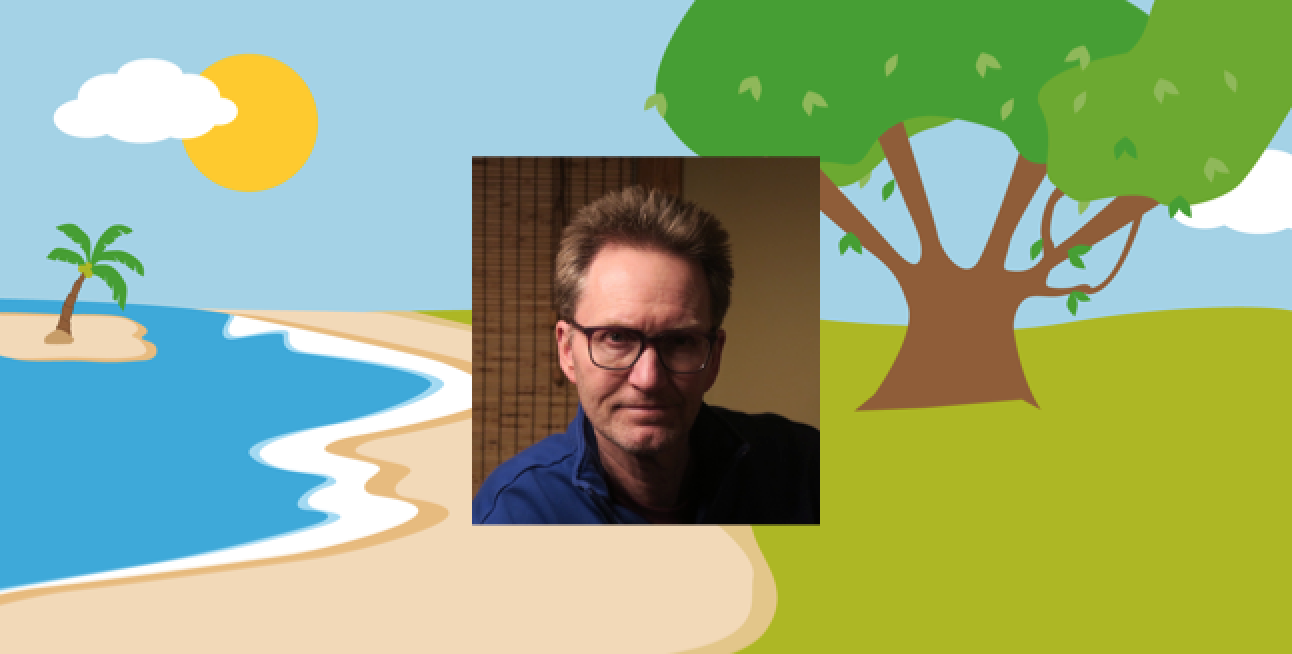Welcome back to our Partners in Peace interview series. This is the 12th interview in this series, and we are exited to introduce Mr. Tim Iverson, who has been in public education since 1988, and currently teaches art and humanities at Highview Middle School in Minnesota, and is on the board of Mindfulness in Education.
Please tell us a little about yourself, what drew you to mindful education and to want to be on the board of Mindfulness in Education, and the Mindfulness in Education mission.
My interest in mindfulness began with my own struggles with stress, anxiety and depression nearly 20 years ago. I heard about an eight – week MBSR (mindfulness -based stress reduction class) here in the Twin Cities, and took that in the summer 0f 2001. It radically changed my life. It gave me many tools to slow down my mind and body and to take charge of my focus– and my life!… from there, I continued to take more classes and workshops on mindfulness, which included trips to the coasts to conferences put on by the Mindfulness in Education Network. Those folks gradually started asking me to fill in and do workshops there, and that led to an invitation to be on their board. I’ve also been active in NAMI Minnesota, working with adults who experience anxiety and panic disorders. I shard mindfulness and other cognitive strategies with those folks. My journey has also included counseling, to help me keep things in perspective, and this has been very helpful.
Why is Mindfulness in Education so important right now, with everything that is going on in the world?
I believe mindfulness is absolutely vital for education, due to so many stresses and strains on the system as well as on individuals within that system. Overcrowded classrooms, high-stakes testing, social media influences, and troubled homes, are just some of the factors influencing the classroom today, making it very different from when I attended school 50 year ago…. Students and educators have to have SOME tools to slow things down, and deal with emotional roller coaster that is now a normal part of the classroom. Mindfulness and SEL (social and emotional learning) programs are cropping up all over the world to help deal with these challenges. And although changes to the system are also needed, in the meantime, tools such as those offered by mindfulness are readily available, and not expensive to implement.
Do you believe it is important for organizations with similar missions to work together to get programs about Yoga, meditation, and mindfulness into every school in the country? How else can we scale up to get these programs in all schools?
This a good question, and is still being explored. The mindfulness in education movement is still relatively new, but it has made great strides in the last 10 years. I think it will be very important to have organizations and individuals band together to support each other, as well as create standards for teachers doing this work, as well as creating lists of “best practices”. We also want to be careful as educators to be aware of trauma, as well as keeping these practices secular and science-based.
If you had to pick one mental or physical exercise for kids to do to help positively shape their future behavior and health, what would it be?
Wow– great question! There are so many powerful practices under the umbrellas of yoga and mindfulness!
No one practice will solve all of our emotional challenges, but I often turn to a very simple body scan or breath meditation to help get some distance from my thoughts, and slow down my mind. With students, I often do the STOP practice (stop, take a breath, observe, proceed) to re-establish focus in my class….. And I almost always do at least 1-2 minutes of formal mindfulness for myself right after lunch. It gives me a wonderful chance to re-set and prepare for the rest of my day.
What advice do you have for teachers, administrators, healthcare practitioners, athletes and especially parents as it relates to mindful learning?
My basic advice is to be open to these ideas, even if they originally were honed in spiritual contexts. Reading and literacy were once the province of religious societies until their power was shared with “the masses.” The same thing may be happening with mindfulness. The general, universal appeal of mindfulness can be a powerful force in shaping peoples’ lives for the good, and gives everyone simple yet powerful tools to manage their own lives.
Thank you Mr. Tim Iverson for speaking with us today. Love that last answer. It is so very true. These tools are for everyone, all about peace, love, and kindness, and can help make the world a much better place for the next generation, so let’s start now!
For more information about Wuf Shanti: https://wufshanti.com/2018/05/about-wuf-shanti/

